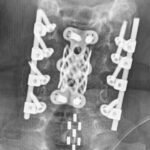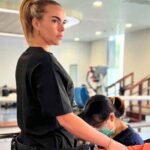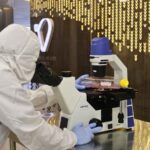Macy, can you tell us your story?
Ok, so in February of 2020, I had a car accident involving me and my children. They are fine, but I was paralyzed from the chest down. I was in the hospital for approximately five months, rehabbing and recovering. When I left, which would have been approximately June of 2020, I went home to do in-home rehab. And then I did outpatient rehab. What I learned in that process is that there wasn’t a lot out there for people like me to help recover, at least in my area. I was fortunate enough to come upon these new nerve transfers, with a doctor based out of Boston, Massachusetts, Dr. Justin Brown, a fantastic doctor. From that point, I was able to get some of my arm and hand function back which is still in process. Through that process, I came across Veritas neuro – a fantastic facility. You guys were putting some information out there via Instagram, Facebook, and other media outlets. And I decided to reach out and see what it was all about. In the United States, it’s not being offered in the way that they’re offering it. Currently, to my knowledge, Bangkok and Guadalajara are the only two places that you can go to get epidural stimulation of the spine and the rehab. There is also an option to have stem cell therapy. I reached out to Verita Neuro maybe a month or two before I came to Mexico, which would have been June 14 and I’ve been here for approximately 30 days. We’re seeing great progress. I took my first step, July 1st, my AD [autonomic dysreflexia] is much better. My blood pressure is already higher, I’m actually getting hot at night instead of cold, which is extremely weird because I’m always cold.
What was your condition before the surgery?
I did not walk. I did stand with my standing chair and bike, indoor and outdoor, actively and passively. I was a personal trainer prior to injury so fitness was a big part of my life and it still continues to be so I would say that has definitely helped me in this process. But what I’m doing now, I was not doing that before and I would say that I was just gaining tricep function and now I’m doing some push ups unassisted. It’s insane how your body just responds to this process when you put the work in. But everything that you see that I’m doing, I was not doing that before I came here.
Most patients are nervous about the surgery before they come. Were you nervous?
Before the surgery, I want to have a panic attack! But I’ve had so many in the past year that I’m trying to get there. And what I will say is this, my surgery in Guadalajara was perfect. It was perfect. The doctors and the nurses took fantastic care of me. I don’t know how to say this without sounding rude. In the States, the nurses come every hour, but at Verita Neuro I had nurses in the room like every five minutes checking on me. So I always had someone there making sure that I was fine. I had no complications after the fact, no infections. The staples were removed within a few days. My scars are minimal. I did not have an uptick in spasms, which I was expecting. I didn’t need pain medication or anything like that. I healed fairly quickly and we were ready by day 3 to get started with the actual programming of the epidural stimulator.
“There’s going to be a lot of opportunities out there for you and it’s up to you to seize them and do something with them.I am so happy that I did this and I’m extremely proud of myself.”
Macy Ledet
What was the mapping process like?
So the first time they turn it on, I don’t know if I’m the only patient that this happens to, but I just laugh. I think it’s a tickle program! And then the guys are constantly telling me that maybe we should have one of those. So that anytime you’re sad, you can just turn it on and you can laugh. But initially, when it was turned on, you can feel it. I don’t know how many quadriplegic patients have sensation in their legs, I still do. But I could feel the electrical current. Where you can feel it depends on what electrode you’re turning on. That’s not going to make sense to a lot of you right now. But each electrode controls a part of the lower body. And when you turn that on, you can feel sensations in those particular parts of your body. So for instance, if I’m looking at part of the foot, that part of that stimulator will make that part of my foot tangle. That’s how you start to get a sense of what they’re programming and how you need to interact with the program. I think it took me maybe two days to get my mind wrapped around the process. But once I figured it out, we started to get volitional movement fairly quickly. How you talk to yourself is how your body’s going to move.
How does the stimulator work with your body?
The simulator itself doesn’t necessarily move you – it will move you, it will compel you to make certain movements with your legs, or your feet, or your toes, but you have to talk to it. So I think that part of the process is that if you’re already really in tune with your body, it’s probably not going to be that foreign to you. But for those of you whose injuries may be a little more attenuated, from the stimulator being implanted, I think you’re going to have to really hone in on that, and focus and try not to get distracted. I think we were on day 4 when I was able to kick my legs, and day 5, where I was fully doing volitional movements, and understanding it. So again, the simulator itself is not what moves you, it’s how you talk to the stimulator in respect to moving through your body. So you really need to focus on that, understand the sensations where you’re having them, and then make your brain want to do those movements, too. But yeah, that’s also being in tune with your body and understanding how it moves. My core is a lot tighter now. So I have a lot more control over my movements. And that I will say that has been a positive side effect of the stimulator. My trunk control is remarkable.
What is the relationship between activating your trunk and the stimulator?
I’m activating it in some way. When we talk about the core movement, I’m always saying ‘my core is so tight’ – each patient responds differently, in different muscle groups. My two different muscle groups that respond to me are my glutes and my core. But I was very active prior to injury and those two areas were probably my strongest areas, so it didn’t surprise me one bit when those two kicked in. What I’m feeling is in my lower abdomen, in my pelvis, I can feel the sensation of the stimulator, and I’m speaking to my pelvis and my core and forcing that portion of my body to either kick that leg out or pull that leg in. So if you see me laying down, tightening my core, I’m not just tightening it, I’m having to visualise mentally which leg I’m going to activate. So I’m sure there is some active and passive going on, some voluntary and involuntary but most of the movements that you’re seeing is me voluntarily engaging my core, voluntarily activating my pelvis and voluntarily kicking that leg out. So those are all movements that you have to think through, push through and breath through.
What did you do to change your body temperature after the implant?
When you have the stimulator you have 12 programs and a little controller. One of them is called the overnight program. The overnight program is a low intensity sensation that resonates through the spine and it kind of gives a little bit of a tingle, you don’t keep it too high, but I’ve noticed that since I’ve been doing the overnight program, that I’m warmer at night. I can tell you that is making someone in my life very happy right now. But I’ve noticed that my blood pressure has changed. I used to be in the low 90s, 90 over 60 and now my baseline is somewhere around 112 over 68. That has not happened since before my injury. I wasn’t expecting these two things so quickly, so I don’t want to set a false pretense that this is the norm. I do agree with Dr Nasir that for the most part over time these things will happen for you. Things have just happened sooner for me than I think is the status quo. I’m thankful for that but I don’t want to give a false narrative either. You will get there, these things take time and once you figure out your body and your programs and when to use them, all of that is going to help with your body temperature regulation and your blood pressure.
How long is the training after the implantation of the stimulator?
My plan was to stay for 35 days. I was in the hospital for a week but we started mapping on day three and from the first afternoon I was at the outpatient facility, we were at work in the therapy room. So those 7 hours days started in the hospital and when you get to the outpatient you’re doing the exact same thing. You can expect to stay here for at least 30 days and I would say that if you need to stay longer you should be prepared to stay longer. I am not going to be staying longer on this trip, I do plan on coming back in the next 3 to 6 months to check on my mapping, to get some more intense physical therapy – these guys are the best so there’s no better place to be. That being said, you are going to get to a point where you need to go home and do the work and then you’re going to come back and update those programs. But I would say that for your official visit that you need to stay at least 30 days if you’re going to get the most out of it.
How is your progress and what does your schedule look like?
I workout six out of seven days a week. We get up in the morning and I go straight into therapy. After therapy, I get maybe an hour to an hour and a half break. That’s normally when I eat and go fix my hair. And then after that, I’m back at mapping for the afternoon. And after that, I actually do hand therapy, which is something that I kind of added. I can move my fingers, which isn’t a side effect of this therapy. My nerve transfers are why I can move my fingers. But epidural stimulation is offered for the cervical spine, which controls the upper body, and mine is in the lumbar. But coming back to the schedule, it is a lot of work. And I am a worker! When I say I work, you can ask anyone in my life, if I’m not working, I’m sleeping, or raising my kids, whatever it is, I’m doing, I’m working. So I came in here with the mindset to work and I’ve been, you know, hearing questions from all over the world, with people asking me about this process. And what I can tell you is, if you come here and you do the work, you’re going to be successful. But you have to get up in the morning with the mindset that this is a full day. This is not a vacation. This is work. And so the six days out of the seven that you’re here, you need to be ready to do the work, you’re going to be tired, there’s going to be days where you’re not going to want to get out of bed and you need to get up and you need to go to work.
Do you get much downtime?
Sunday, you can rest, you can sleep in and you can eat all the junk food you want. You can have a nice day by the pool, but you really need to come here to do the work and I believe in this process. The team in Guadalajara has been absolutely amazing to me. They’ve become like a second family. The people here are so nurturing and loving and caring and supportive. I am happy that I came here because I’ve been able to show a different facet of Verita neuro and a different team and really put out some really good information and at the same time, you know, we mesh really well which is helpful for progress. But it’s also because of the team that I’m working with. You know, it’s just simpatico. I don’t know how else to say it. I would highly encourage everyone to follow what we’re doing and consider coming to Guadalajara. Dr. Nasir is still your doctor and he’s still part of your process. But COVID Times are hard. It’s a hard time to want to get out in the world but I can tell you, you’re 1,000% safe here.
Why did you not get the surgery in the US?
We should ask the FDA!! I shouldn’t say that online. Okay, so the reason being is they are in clinical trials, based out of Louisville, Kentucky right now. It was started by the Department of Defense and it’s extremely difficult to get into. There are 100,000 people on the waiting list. They’re only accepting people under a certain age. And if you don’t know someone you’re probably not going to get in right now. It’s not looking to clear until 2025. And that might not even be the case at this point. The first two years of your injury are quite critical so you have to triage. I knew, for instance, that my nerve transfers needed to be done within the first year, because your nerves start to dwindle away and die, and you have to worry about that. Second thing is that after the first year, your spinal cord starts to see a little bit of healing and you start to understand what it’s going to look like. So within that second year by taking an MRI, Dr. Nasir is able to see what the potential for recovery could be with the simulator.
For me, this was a personal decision. Within the first few years, I knew what I wanted to accomplish. This was on my list of things that I wanted to do for myself. And I didn’t think 2025 was something that I could wait for, on a what if? So, I chose to come here, because the US does not currently have it open for everyone. I don’t agree with that. I wish that we as a country could maybe figure this out in the very near future. But I’m not gonna lie to you guys, it’s probably not going to happen right now. And so epidural stimulation with Verita Neuro is a very real option. Thailand is an option too.
What was it like deciding to come to Verita Neuro?
I’m an attorney, I’m currently shooting a documentary, I’m Miss Wheelchair Louisiana, I’ve got a brood of children. Was this an easy decision for me? Absolutely not. Would I do it again? In a heartbeat! My children are 1000% supportive of my choices, I have the wonderful support of my family and friends, my best friend Sarah is back home running the practice like a champ, my godfather is my hero and he’s part of the reason why I’m here. I feel like your support system is what’s going to push you to make these kinds of decisions. I don’t care where you go in the world. Guadalajara is extremely safe and a beautiful place, I’m sure that Thailand, although I’ve never been, is much the same. I would say that no matter where you go in the world, your support system is what’s going to get you through it. So the decision was made easy for me because the people in my life that support me told me ‘This is what you need to do, this is your time, and we’re going to make sure everything is ok while you’re gone’. So I’m able to be here and focus 1000% every single day on what’s in front of me because I know the people behind me are supporting me 1000%. So I would say that if you have the means to be here and you have the support to see you through it, that’s what’s going to make this easy for you.
How important is it to have family with you?
I am not here with family, I’m here with a caregiver, the same caregiver that I have at home. So my daily routine as far as morning, bathroom, shower, medication, I depend on her for that. That being said, I also have 24 hr nurse care. If I’m going to the mall, I will probably have a nurse! They check my blood pressure, my temperature, my vitals. They make sure that if any assistance is needed with transfers – I guarantee you that as a quadraplegic all your thinking about is ‘How will I transfer?’ – so there’s someone to assist you to get you in and out of bed, to get you into your shower chair, to help get you dressed, whatever. But I highly, highly, highly encourage you to bring someone for support whether it be a caregiver or a family member, I think that it will really benefit you in this process.
What would you say to people who are thinking of having the treatment?
If you’re on the fence, I think you should do it. If you have the energy and the wherewithal and the know how to get as far as you have already, it’s definitely worth a shot and I believe that every take that you step forward is an opportunity for you to get better – this is another opportunity for you. There’s going to be a lot of opportunities out there for you and it’s up to you to seize them and do something with them. I am so happy that I did this. I’m extremely proud of myself for how I’ve handled this process, it is not easy to be away from home and the people that you love and push yourself like this. I really wish all of you the best and I hope that you continue to follow this journey and I hope that this works for you.






